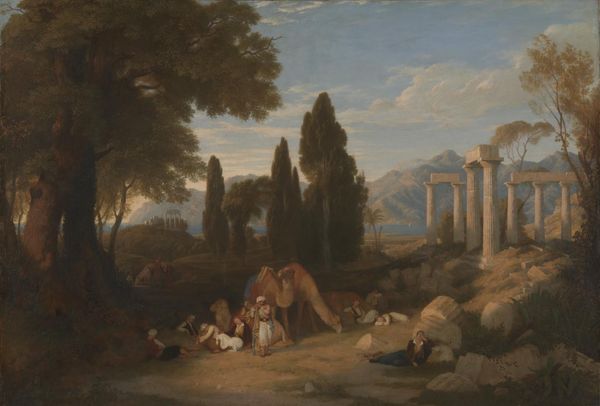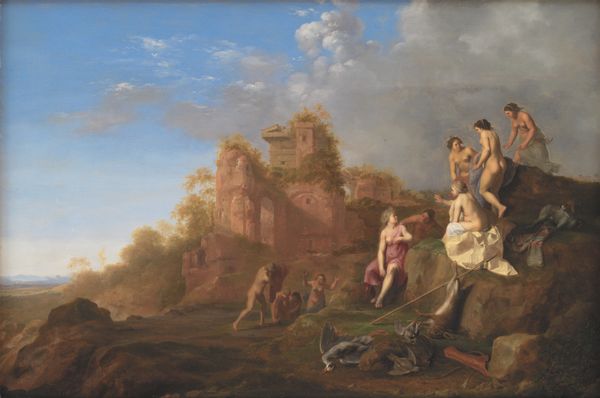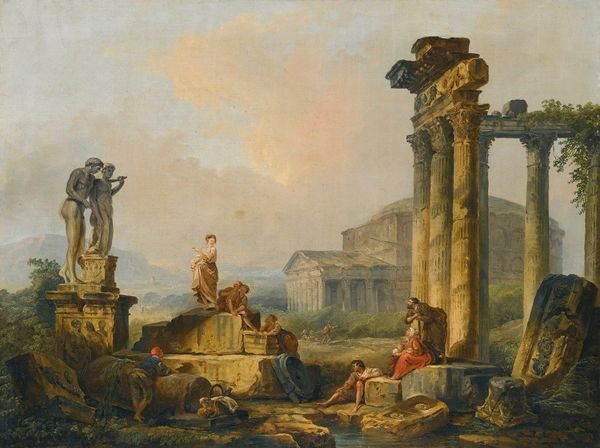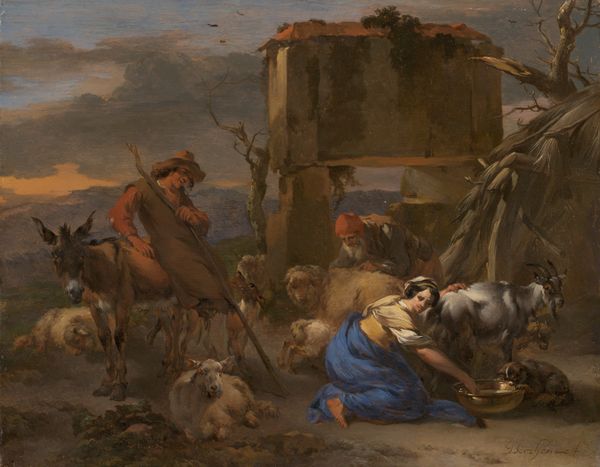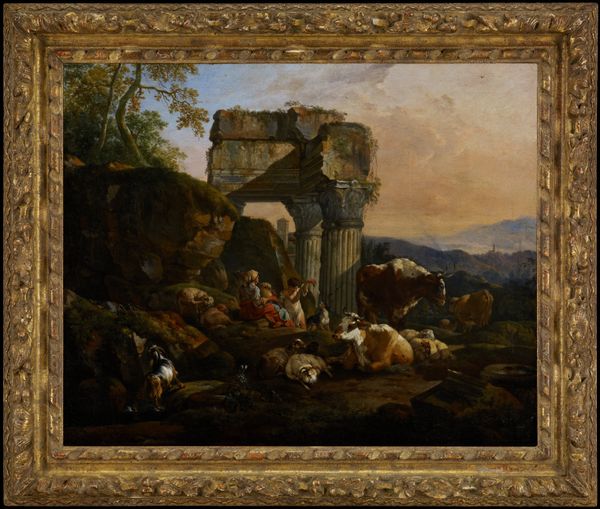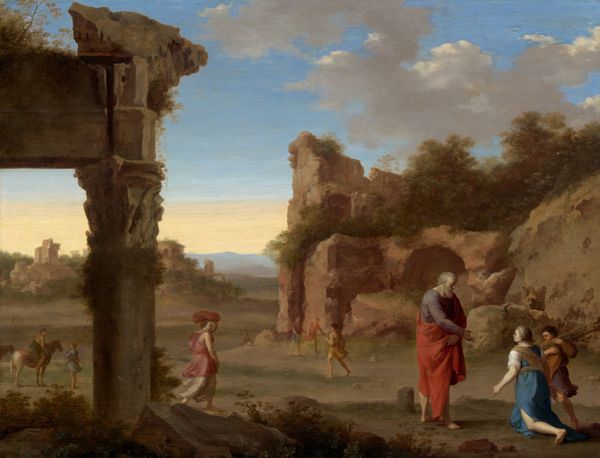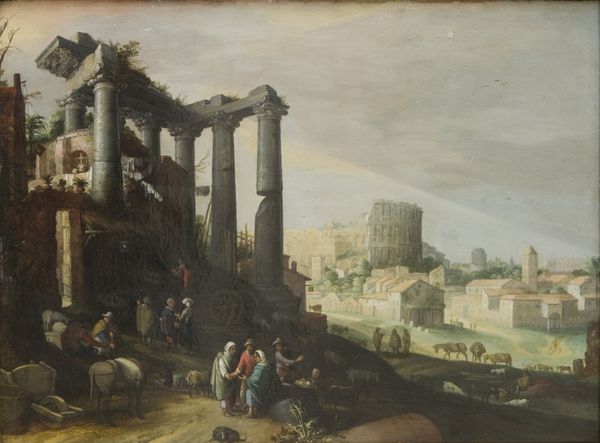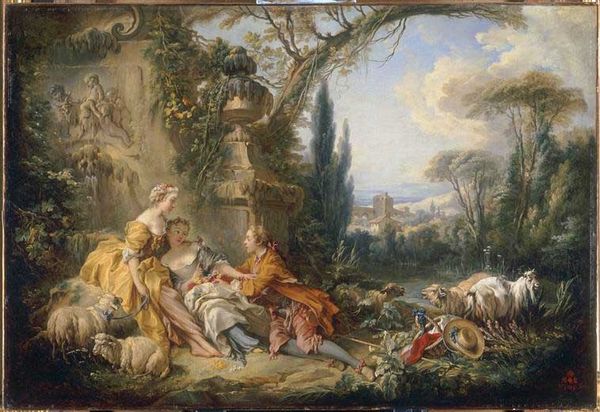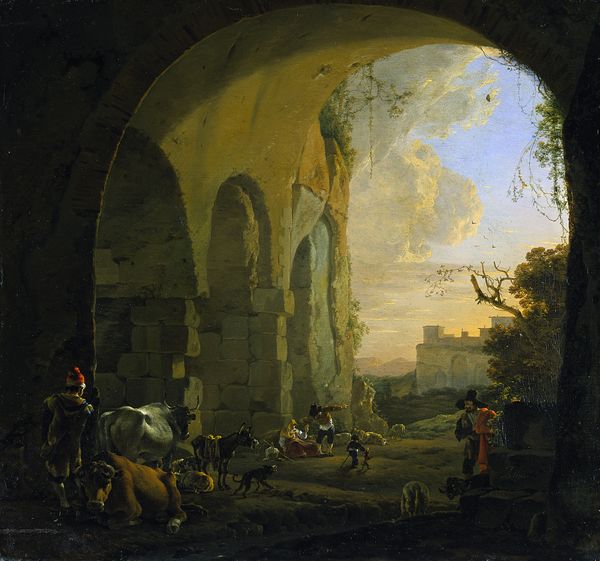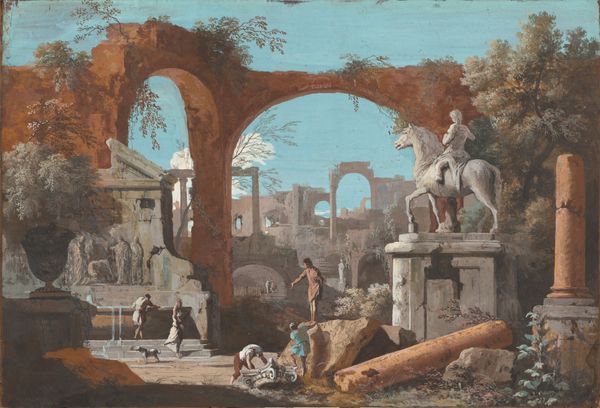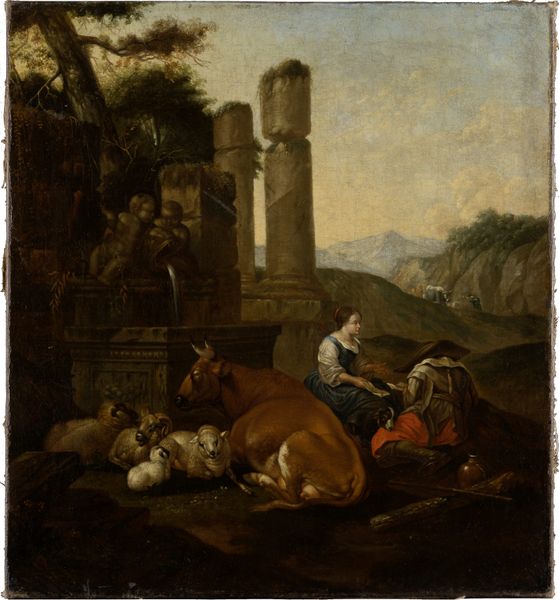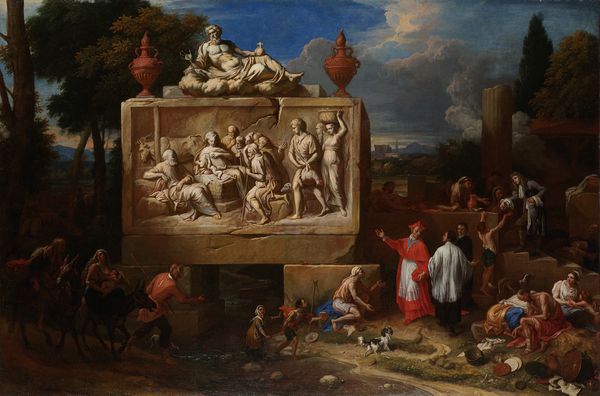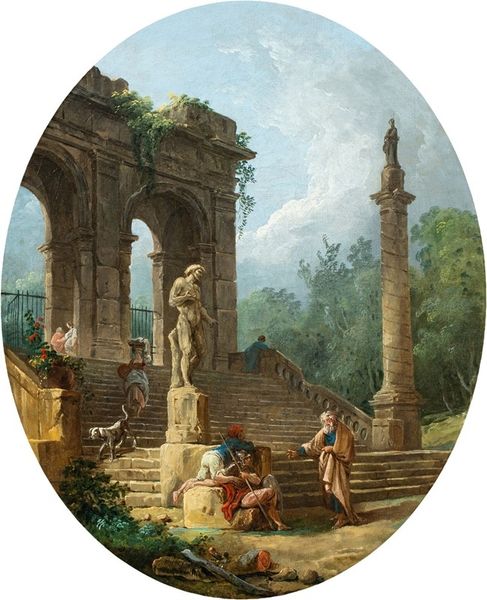
Shepherd's Family at the Ruins of the Temple of Vespasian 1674
0:00
0:00
oil-paint, oil
#
baroque
#
oil-paint
#
oil
#
landscape
#
figuration
#
oil painting
#
14_17th-century
#
genre-painting
#
history-painting
#
realism
Dimensions: 54.6 x 61.5 cm
Copyright: Public Domain
Johann Heinrich Roos painted this scene of pastoral life at the ruins of the Temple of Vespasian, likely during his time in Italy. Ruins evoke the past, a meditation on time and change. Here, the columns and arches of the temple—symbols of a once-great empire—are juxtaposed with the mundane activities of the shepherds and their animals. This recalls the classical motif of "Et in Arcadia ego," where even in idyllic settings, mortality and the past are present. We see the ruins in other contexts—Renaissance paintings where they might symbolize the triumph of Christianity over paganism or Romantic landscapes where they express melancholy and nostalgia. Consider how the image of the "Good Shepherd" who cares for his flock is deeply rooted in religious art and literature, symbolizing guidance and protection. Here, this symbolism blends with the ruins, creating a powerful emotional resonance—a reminder of both the fragility and endurance of human existence. This cycle is like a pendulum swinging between the past and the present, its arc charting the changing meanings we ascribe to symbols over time.
Comments
Join the conversation
Join millions of artists and users on Artera today and experience the ultimate creative platform.
